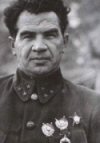exsonic01
Posts: 1131
Joined: 7/26/2016
From: Somewhere deep in appalachian valley in PA
Status: offline

|
About the Chieftain vs T-80BV:
It would be case by case. IRL, it is impossible to conclude who will definitely win or lose, or who will have definitive kill ratio. Like I mentioned in the one of the reply post, there are lot more than catalog specs.
T-80BV and Cheftain are comparable against each other with their own pros and cons. L23A1 APFSDS shell suffered from lack of punch power (500mm RHAe or less at 2000m) when compared to other NATO counterparts, but so as 125mm BM26 and BM29, and I don't think 89' Soviet army issued BM32 to all of their T-80BVs fielded in DDR. So, IMO their penetration ability are comparable.
T-80BV used cast+composite armor, and its Kontakt-1 is not the heavy ERA. More importantly, T-80BV only weighs 40~45ton, and this tells a lot about its defensive ability. Unless it is belted by Stalinum, 40~45t tank wouldn't have good defensive efficiency. L23A1 would have a chance to crack T-80BV's frontal. But Chieftain is also based on cast armor, and added more protection with composite armor which has better defense against HEAT rather than APFSDS. So, their defensive ability are also quite comparable.
Chieftain mk11 (which was fielded in 89) equipped the 1st generation thermal sight, but the TOGS was suffering from low resolution. IIRC, it was 320*240. (Even TOGS-2 had not-that-great resolution). It would really hard to tell what would be the white dots in the screen, especially if the target is 3km or more away. Gunner may told to leader "Sir, I can see something moving at 2 o'clock, 3.5km, but I can't recognize what is that". However, it would be better than nothing. At night, T-80BV even could not recognize anything more than 1km away. Rain would degrade the thermal, but still better than nothing. Chieftains would have great advantage at at night, on rainy day, or under smoke, and kill ratio would be greatly British favor. Plus, training and experience would improve the ability of recognition with TOGS thermal, and I expect 89' British tank crews would be more well trained than Soviet tank crews. That would be the moment where the harsh training shines - ability to recognize enemy tank from long range.
T-80BV equipped with gun-launching ATGMs, which guarantees the long-range fighting ability. However, it was not reliable weapon. Reflekt missile was better, but with the inferior FCS and crew experience, it is possible that only 0~1 gun-lunching ATGMs would hit among 5 shots. In addition, 1998 Greek tank test exposed the problem of Russian tanks - low accuracy. Rapira cannon has very fast muzzle velocity, which ensues the relatively straight ballistic curve until 1000~1500m. However, most of tank battle on German soil was expected to be at least 2km, or longer distance. Their weakness - inferior long range reliability - would induce very harsh condition for Soviet tank commanders and tank crews.
So, the battle between two battle group would greatly depends on terrain, weather/time, and commander - who has better understanding of pros and cons of their own tank and opposite's tank. Crew experience and training would be the serious factor, and IMO at 89' Germany, British crews would be better than Russian counterparts. We also need to consider that most of the battle during the cold war would be British defense / Russian attack, and British tank would be in the hull-down position, waiting for the march of Russians. Chieftain would have the advantage from better training and first-shot from defensive position.
If I were British commander, I would not command to open fire until at least within 3000m, where I could expect the penetration of T-80BV frontal armor with L23A1 APFSDS. Hasty shot from further distance would fail the penetration, and only expose the ambush position. I would command to shot carefully to maximize the accuracy, try not to expose our positions. Within 3000m, well trained British gunner and leader would easily recognize soviet tanks by TOGS or by optics. Smoke from friendly artillery would maximize the thermal sight advantage. Call artillery and airstrike if the number of tanks are overwhelming. I expect very optimistic result from the engagement.
If I were Soviet commander, I would not advance my tanks without recons. With the good idea of enemy defense line, there are two choices - flank the enemy position, or assault with fire support. Flanking would be the better choice since it would force British to give up their position, and force them to maneuver in open field. This would maximize the another weakness of Chieftain - not-that-great engine. Successful flanking will bring very Soviet-favor condition = engage within 1000m. Cheiftain's armor is not tough enough to defend the Russian APFSDS within that close distance, and accuracy of Soviet tanks will be maximized. If I forced to begin frontal charge (because of political officer or KGB agent or whatever), I will command to shoot Kobra/Reflekt ATGMS from 5km, try to interfere their aim and suppress them, and call air support or artillery support. At the same time, command my tanks to approach at full speed, but try to use cover at their best. From this moment, there's not much thing a commander could do - degree of training of tank crews will tell the answer.
Likewise, it is very hard to tell who will going to win or lose or who will going to have better KD ratio in real-life situation. And it seems it is well described in other people's answers.
ps) To OTS guyz : Is this possible to introduce an ability like "begin engage from 3000m, or 2000m, or any distance given by player" to SS? Sometimes I don't want to open fire from too far distance, because it would be waste of ammo and expose the ambush. Leave default option as it is now, but just offer an option to players to control engage and ambush.
< Message edited by exsonic01 -- 11/3/2016 11:31:59 PM >
|
 Printable Version
Printable Version












 New Messages
New Messages No New Messages
No New Messages Hot Topic w/ New Messages
Hot Topic w/ New Messages Hot Topic w/o New Messages
Hot Topic w/o New Messages Locked w/ New Messages
Locked w/ New Messages Locked w/o New Messages
Locked w/o New Messages Post New Thread
Post New Thread